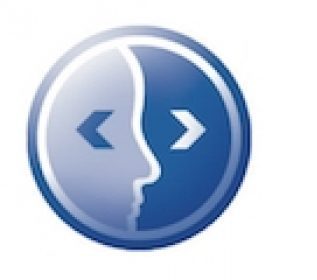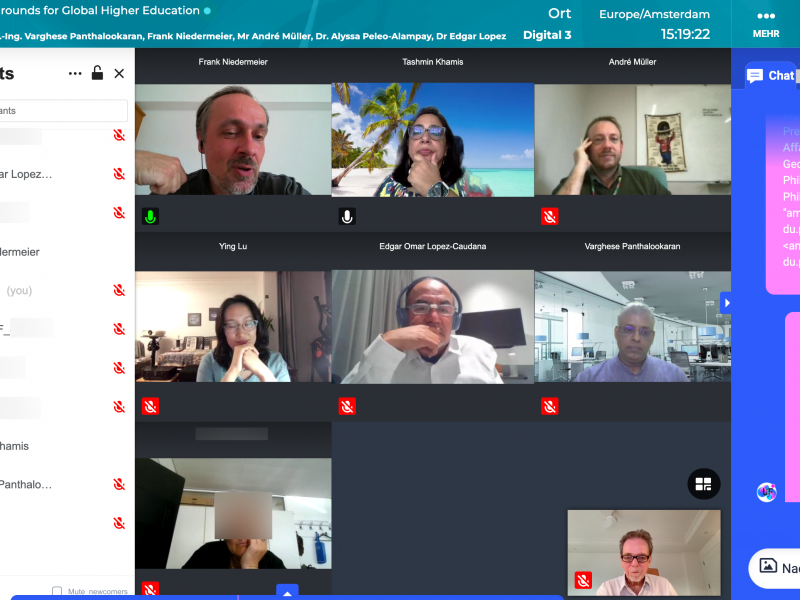Over the past few months, I have delved deeply into the conceptual world and methodological implications of Actor-Network Theory (ANT) and how it can be applied to higher education and digitalization-related research. What fascinates me about ANT is its ability to shed new light on “standard problems” in the practice and research of educational technologies, media didactics, and related areas. Typically, what sticks with people regarding ANT is the expansion of the term “actor” to include non-human entities. Bruno Latour illustrated this with examples like speed bumps on the road, hotel key fobs, and revolving doors. Michael Callon’s analysis even brought lasting fame to North Atlantic scallops within the ANT community. Viewing the world through an “ANTish” lens is incredibly intriguing; one can observe the connections and dynamics of actors at every street corner, in every store, in every university, and within every text.
ANT and Educational Technology
ANT is particularly suitable for examining educational technologies because the sociotechnical entanglements are especially evident here. However, ANT offers more than just analyzing devices, media technologies, and technological infrastructures for their (social) effects. What I find even more captivating is interpreting abstract entities – such as models, concepts, and theories like “science,” “learning management system,” or “instructional design” – as network effects. These effects can only emerge when many actors establish stable connections, which is only possible when material, “non-social” entities are involved. The goal is to trace these translations that influence everything from a PDF-script in Moodle to a chatbot with LLM integration. While these insights are neither mysterious nor entirely new – since we are accustomed to living in a world of meanings composed of people, things, and relationships – they offer a way to better grasp the complexity of things. ANT focuses on what these actors “do”: When and how is the PDF downloaded, printed, highlighted, copied, and saved? Is it processed with a full-text search? Is that possible with this PDF? What “does” the PDF script contribute to the teaching-learning setting?
ANT and Generative AI
ANT aims to trace the movements and transformations of things and actors. Applied to generative AI, this perspective implies that “the LLM” or “genAI” cannot be fully described without tracking the numerous interactions through which our concept of genAI is established. The role models (“tool or partner”) currently discussed regarding genAI are speculative and – as most authors acknowledge – only partially reflect practice, as these roles mix, occur in different settings, and vary widely. The chatbot interacts with users, reflecting and altering their role perceptions, acting as a fluid actor among other fluid actors1. Therefore, and here’s the downside, ANT is not particularly suited for designing futures but excels at describing processes retrospectively. However, it is effective in analyzing processes and entities, providing insights into how things may not develop.
ANT Provides Complementary Insights
ANT is not a “new theory.” Those thinking in praxeological, discourse-theoretical, systems-theoretical, social-constructivist, or historical-materialist terms need not see it as competition (although Bruno Latour was highly critical of contemporary sociology…). ANT should be viewed more as a method that complements the description of reality. Embracing it can reward one with new and surprising insights. In my blog post (in German only, sorry…), I described why and how I came to ANT. Now, I want to share the key points I have formulated for my work with ANT. It is a concise list of principles that could be greatly expanded and cross-referenced but should serve as a guide and methodological reference.
Principles of ANT
Several principles characterize ANT:
- Social phenomena arise from associations of equal actors. ANT follows an understanding that treats both human and non-human actors as equal (“symmetrical”) elements within a causal context. All actors2 are involved in constituting and stabilizing a social phenomenon, regardless of their nature, and must be equally considered in analysis.
- Non-human actors are diverse. Non-human actors can be technologies, devices, artifacts, animals, systems, theories, models, etc. What defines an entity as an actor in a specific context is whether it “makes a difference,” meaning it affects other actors and the context. This applies equally to humans.
- Every actor is a network and vice versa. Every actor can be interpreted as part of a network of actors. Conversely, every network can be seen as an actor. Thus, it is generally appropriate to speak of an “actor-network.”
- An actor-network can appear as a black box. A specific actor-network can be viewed as a “black box” when it performs a stable, predictable function. The internal structure of the black box is irrelevant as long as the function is fulfilled.
- The world of actors is flat. In the actor-network, categories and hierarchies do not emerge naturally. The path from an individual actor to ontologies, categories, systems, or other abstractions involves distinct steps, objectifications, or partial actions that can be traced.
- Follow the actors! ANT’s epistemological approach involves identifying actors and tracking how their causal contexts unfold – how they connect with other actors and what occurs between them. The network is the form of movement and representation of these contexts and “not the thing itself” (Latour, 2010, p. 228).
- Stability is the exception. The world of actor-networks is dynamic. Actors maintain their identity and stability by creating and sustaining a stable whole through interactions with other actors. This process never rests but only achieves a dynamic equilibrium, requiring continuous activity.
Let’s talk ANT!
References
- Belliger, A., Krieger, D., Herber, E., & Waba, S. (2013). Die Akteur-Netzwerk-Theorie. In M. Ebner & S. Schön (Eds.), L3T.
- Belliger, A., & Krieger, D. J. (2006). Einführung in die Akteur-Netzwerk-Theorie. In A. Belliger & D. J. Krieger (Eds.), ANThology: Ein einführendes Handbuch zur Akteur-Netzwerk-Theorie (pp. 13–50). Transcript-Verl.
- Callon, M. (1984). Some Elements of a Sociology of Translation: Domestication of the Scallops and the Fishermen of St Brieuc Bay. The Sociological Review, 32(1_suppl), 196–233. https://doi.org/10.1111/j.1467-954X.1984.tb00113.x
- Callon, M. (2006). Einige Elemente einer Soziologie der Übersetzung: Die Domestikation der Kammmuscheln und der Fischer der St. Brieuc-Bucht. In A. Belliger & D. J. Krieger (Eds.), ANThology: Ein einführendes Handbuch zur Akteur-Netzwerk-Theorie (pp. 135–174). Transcript-Verl.
- Dimai, B. (2012). Innovation macht Schule. Eine Analyse aus der Perspektive der Akteur-Netzwerk Theorie. VS Verlag für Sozialwissenschaften. https://doi.org/10.1007/978-3-531-94364-0
- Fenwick, T. J., & Edwards, R. (Eds.). (2012). Researching education through actor-network theory. Wiley – Blackwell; Kindle.
- Latour, B. (2006). Technik ist stabilisierte Gesellschaft. In A. Belliger & D. J. Krieger (Eds.), ANThology: Ein einführendes Handbuch zur Akteur-Netzwerk-Theorie (pp. 369–398). Transcript-Verl.
- Latour, B. (2010). Eine neue Soziologie für eine neue Gesellschaft: Einführung in die Akteur-Netzwerk-Theorie (G. Roßler, Ed.). Suhrkamp.
- Niemeyer, J., Tillmann, A., & Eichhorn, M. (2019). Digitalisierungsprozesse an Hochschulen – der Blick der Akteur-Netzwerk-Theorie. In N. Pinkwart, J. Konert, & Gesellschaft für Informatik (Eds.), DeLFI 2019 (pp. 85–90). DeLFI, Bonn. Gesellschaft für Informatik e. V. (GI).
- Reckwitz, A. (2014). Die Materialisierung der Kultur. In F. Elias, A. Franz, H. Murmann, & U. W. Weiser (Eds.), Praxeologie (pp. 13–28). De Gruyter. https://doi.org/10.1515/9783110370188.13
- Röhl, T. (2015). Auffordern. Postphänomenologische Überlegungen zur Materialität schulischen Unterrichtens. In T. Alkemeyer, H. Kalthoff, & M. Rieger-Ladich (Eds.), Bildungspraxis (pp. 233–260). Velbrück Wissenschaft. https://doi.org/10.5771/9783845277349-233
- Schimank, U. (2007). Handeln und Strukturen: Einführung in die akteurtheoretische Soziologie. Juventa-Verl. https://opac.ub.uni-potsdam.de:443/DB=1/PPNSET?PPN=521362741
- Schulz-Schaeffer, I. (2012). Akteur-Netzwerk-Theorie: Zur Ko-Konstitution von Gesellschaft, Natur und Technik. In J. Weyer (Ed.), Soziale Netzwerke (pp. 275–300). Oldenbourg Wissenschaftsverlag. https://doi.org/10.1524/9783486709667.275
- However, the many approaches of the human-AI hybrids/human-machine hybrids seem to me to go in this direction in many cases, i.e., no two entities see that somehow come together, but already a third entity arise [↩]
- In the German-translated ANT literature, the terms “actor” and “actant” are used differently. Early ANT texts typically use “actor” for both human and non-human participants. The term “actant” was later introduced to specifically refer to non-human entities in some publications. To reduce confusion and clearly distinguish the “ANT actor” from its use in actor-theoretical sociology (Schimank 2007), I use in German the term “Aktor” and refer to (German) “Akteur*innen” when exclusively meaning human participants. [↩]



